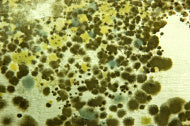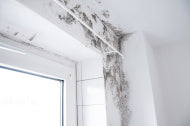Mold at Home and Office - Air Purifier Rescue



Learn about Mold in your Home/Office
How much do you know about mold? You’ve seen moldy food, and that probably makes you shudder, it smells distinct and dreadful. Just hearing the word mold can make most of us queasy, but having actual mold growth in your home, taking up the space within the air you breathe, can make you ill. It can make your whole family sick.According to the Asthma and Allergy Foundation of America, breathing in tiny mold spores into your lungs can cause or aggravate asthma attacks.
While your thoughts focus on colder temperatures during the winter months, you also need to be aware of mold in your home and office. After all, in the chillier days there is much less possibility to open any windows, meaning you are trapped inside with the air that is within your home or office - so it better be clean, healthy air.
While every home has mold spores in the ambient air (they are very common in nature: molds produce tiny mold spores to reproduce. These are invisible to the human eye, but they can travel far), only a few dozen types of mold actually cause health problems.
The worst symptoms may be felt from July to late summer, according to the AAFA. But if mold is growing freely in a home, allergic reactions can occur throughout the year.
Molds are fungi and they grow on humid surfaces. That is why so many people need to run a dehumidifier in their basements during the summer months - to control humidity and prevent mold from even growing. According to American Risk Management Resources (ARMR), moisture intrusion (not climate) is the largest contributor to mold in residential properties.
An air purifier will help if you have mold in your home or office. Air purifiers filter airborne mold spores. They can also work as a preventive measure by helping to prevent mold growing in the future.
Did you know?
Texas ranks as the number one top moldiest state in America, according to ARMR.
Which molds can cause allergic reactions?
The major culprits are Alternaria, Cladosporium (Hormodendrum), Aspergillus, Penicillium, Helmin thosporium, Epicoccum, Fusarium, Mucor, Rhizopus and Aureobasidium (Pullularia).
Allergic reactions to mold
Common symptoms include nasal stuffiness, eye irritation, wheezing, or skin irritation
Severe reactions include fever and shortness of breath.
Some people with chronic lung disease could also develop mold infections in their lungs.
In 2004, the Institute of Medicine (IOM) found there was sufficient evidence to link indoor exposure to mold with upper respiratory tract symptoms, cough, and wheeze in otherwise healthy people; with asthma symptoms in people with asthma; and with hypersensitivity pneumonitis in individuals susceptible to that immune-mediated condition.
How to handle mold health effects
Any time you think you are sick or reacting to something, consult your healthcare provider to determine how to protect your health.
If you think mold at your workplace is affecting you, notify your employer and, if applicable, your union representative about your concern so that your employer can take action to clean up and prevent mold growth.
In your own home, consult government-issued guidelines on how to safely remove mold. You need to be careful, since mold spores are often released when you disturb the mold, and you may be exposed to larger amounts when trying to remedy the situation.
Preventing mold
Prevention is the best form of protection. Mold can grow after 24-48 hours of humid conditions. In order to prevent mold from growing, you can reduce the moisture and humidity in the home, make sure you have adequate ventilation (especially after showering or while cooking) and fix any water leaks or problems as soon as possible.
Serious cases of mold growth should be handled by professionals.
Mold grows in humid conditions - that is why water leaks, floods and similar water problems need to be fixed as soon as possible.
